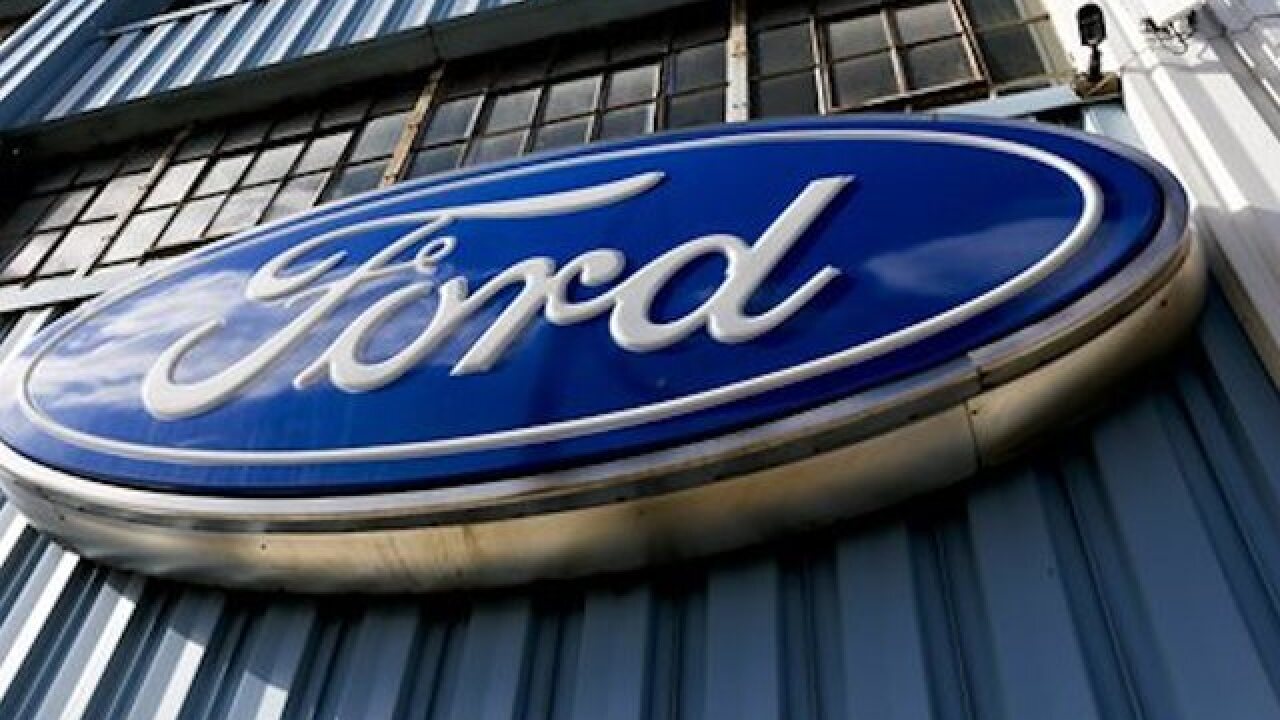DETROIT (AP) — Two Ford Motor Co. models are under investigation by U.S. safety regulators for power steering and door ajar warning light issues that are similar to those that have caused other Ford vehicles to be recalled.
The probes cover about 643,000 vehicles including 380,000 Edge SUVs from the 2011 to 2013 model years, and nearly 263,000 Fusions from the 2010 model year.
About 1,560 people have complained to the National Highway Traffic Safety Administration that the "door ajar" warning light won't shut off on the Edges, and some have reported that the doors can fly open while the SUVs are moving. One injury was reported. But Ford says the door problem is different from one that has forced it to recall at least 3 million other vehicles during the past two years.
In the second investigation, NHTSA said it has 547 complaints that the electric power-assisted steering can fail on the 2010 Ford Fusion. Last year, the company recalled Fusions from the 2011 and 2012 model years, but did not recall the 2010 models even though they have the same power steering system, the safety agency said in documents posted Monday. NHTSA said it has 12 reports of crashes and four injuries due to the problem.
The investigations could lead further recalls, although that decision has not been made. The safety agency says it will "assess the scope, frequency and consequence" of the alleged defects.
Ford spokeswoman Elizabeth Weigandt said in a statement Monday that the company would cooperate in the investigations. "We continuously evaluate our processes for potential improvements, and when the data indicates a safety recall is needed, we move quickly on behalf of our customers," the statement said.
The Edge problem involves a sensor that determines when the doors are open or closed, Weigandt and NHTSA spokesman Bryan Thomas said Monday. The previous door recalls were to fix defective latches that wouldn't hold the doors closed.
Last month, Ford announced that it would spend $640 million to replace door latches on nearly 2.4 million cars, trucks and vans this year because the doors can pop open while the vehicles are moving. That recall has become so costly that Ford had to cut its estimated full-year pretax profit to $10.2 billion from at least $10.8 billion.
Customers have complained about the problem, which has affected much of Ford's North American model lineup, since 2014. At least 3 million vehicles have been recalled to fix the latches, which were installed in much of Ford's model lineup.
Shares of Ford Motor Co. edged up 4 cents to $12.11 in midday trading Monday. Its shares are down more than 13 percent over the past year.
In the Edge investigation, a complaint filed Sept. 9 by an unidentified owner from Franklin, Massachusetts, said the driver's door will not latch, causing the dome light to stay on, draining the battery and making it hard to drive at night. A fix by the dealer didn't work, the person wrote.
"Reported safety consequences as a result of this include doors opening while driving, doors cannot be locked while driving, and the interior dome lights staying on continuously," the safety agency said in documents.
In the Fusion investigation, NHTSA said that according to owner complaints, the power steering failures significantly increased the effort it takes to turn the steering wheel.
In May of 2015, Ford recalled 423,000 cars and SUVs in North America, including the 2011 and 2012 Fusions, to update software or replace the steering gear due to power steering failures. That recall also came after NHTSA opened an investigation. According to a class-action lawsuit filed about the matter, the problem could affect more Ford models, including the compact Focus.
Weigandt said that although the 2010 Fusions have the same power steering system, they do not have the same condition that caused the recall of 2011 and 2012 models. She produced NHTSA documents showing that an agency investigation found that the recalled vehicles had projected 10-year failure rates of 8 to 14 percent, while non-recalled vehicles had about a 1 percent failure rate.



